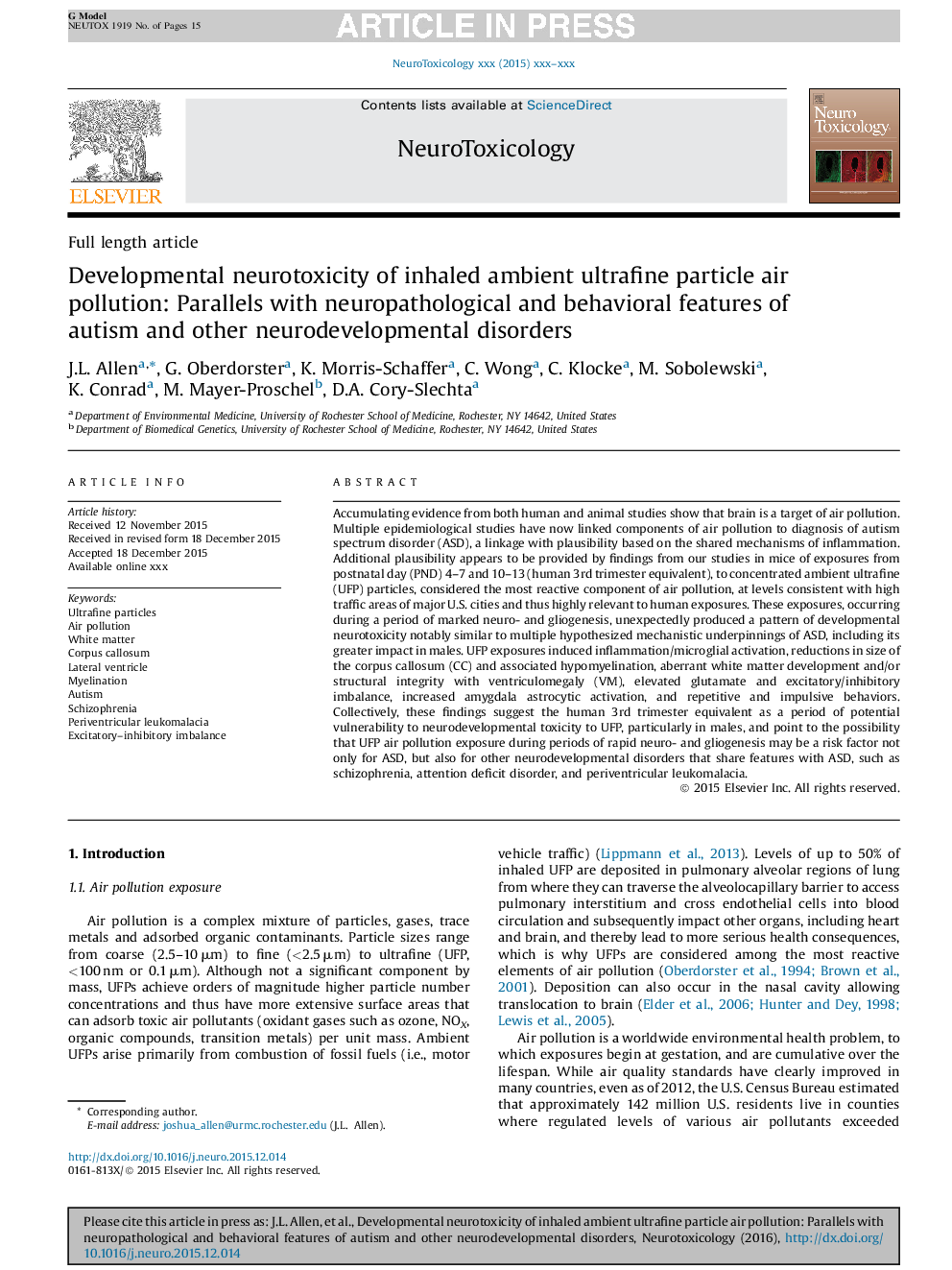| کد مقاله | کد نشریه | سال انتشار | مقاله انگلیسی | نسخه تمام متن |
|---|---|---|---|---|
| 5560952 | 1562035 | 2017 | 15 صفحه PDF | دانلود رایگان |
عنوان انگلیسی مقاله ISI
Developmental neurotoxicity of inhaled ambient ultrafine particle air pollution: Parallels with neuropathological and behavioral features of autism and other neurodevelopmental disorders
ترجمه فارسی عنوان
عصب نوترکیب رشدی در اثر آلودگی هوا با ذرات فوقالعاده استنشاقی: موازی با ویژگیهای نوروپاتولوژیک و رفتاری اوتیسم و سایر اختلالات عصبی
دانلود مقاله + سفارش ترجمه
دانلود مقاله ISI انگلیسی
رایگان برای ایرانیان
کلمات کلیدی
موضوعات مرتبط
علوم زیستی و بیوفناوری
علوم محیط زیست
بهداشت، سم شناسی و جهش زایی
چکیده انگلیسی
Accumulating evidence from both human and animal studies show that brain is a target of air pollution. Multiple epidemiological studies have now linked components of air pollution to diagnosis of autism spectrum disorder (ASD), a linkage with plausibility based on the shared mechanisms of inflammation. Additional plausibility appears to be provided by findings from our studies in mice of exposures from postnatal day (PND) 4-7 and 10-13 (human 3rd trimester equivalent), to concentrated ambient ultrafine (UFP) particles, considered the most reactive component of air pollution, at levels consistent with high traffic areas of major U.S. cities and thus highly relevant to human exposures. These exposures, occurring during a period of marked neuro- and gliogenesis, unexpectedly produced a pattern of developmental neurotoxicity notably similar to multiple hypothesized mechanistic underpinnings of ASD, including its greater impact in males. UFP exposures induced inflammation/microglial activation, reductions in size of the corpus callosum (CC) and associated hypomyelination, aberrant white matter development and/or structural integrity with ventriculomegaly (VM), elevated glutamate and excitatory/inhibitory imbalance, increased amygdala astrocytic activation, and repetitive and impulsive behaviors. Collectively, these findings suggest the human 3rd trimester equivalent as a period of potential vulnerability to neurodevelopmental toxicity to UFP, particularly in males, and point to the possibility that UFP air pollution exposure during periods of rapid neuro- and gliogenesis may be a risk factor not only for ASD, but also for other neurodevelopmental disorders that share features with ASD, such as schizophrenia, attention deficit disorder, and periventricular leukomalacia.
ناشر
Database: Elsevier - ScienceDirect (ساینس دایرکت)
Journal: NeuroToxicology - Volume 59, March 2017, Pages 140-154
Journal: NeuroToxicology - Volume 59, March 2017, Pages 140-154
نویسندگان
J.L. Allen, G. Oberdorster, K. Morris-Schaffer, C. Wong, C. Klocke, M. Sobolewski, K. Conrad, M. Mayer-Proschel, D.A. Cory-Slechta,
